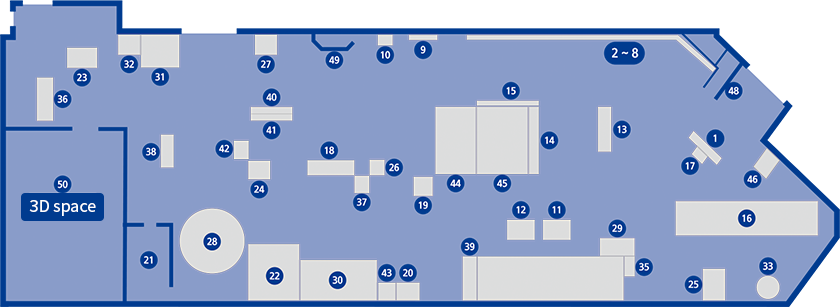Exhibition Hall B
Exhibitions>Exhibition Hall B
Network, Connections Between Elements
The world is interconnected in a complex manner. This hall helps you comprehensively understand case studies and scientific principles from a wide range of complicated systems, such as transportation systems, neural networks, information networks, and the stars and universe.
- 1 How is the world connected?
- 2 What is the basic unit of the scientific alphabet?
(1) Length - 3 What is the basic unit of the scientific alphabet?
(2) Time - 4 What is the basic unit of the scientific alphabet?
(3) Mass - 5 What is the basic unit of the scientific alphabet?
(4) Current - 6 What is the basic unit of the scientific alphabet?
(5) Temperature - 7 What is the basic unit of the scientific alphabet?
(6) Mole - 8 What is the basic unit of the scientific alphabet?
(7) Luminous intensity - 9 What happens when you multiply or divide the basic unit? (1) Pixel
- 10 What happens when you multiply or divide the basic unit? (2) Sievert
- 11 How do subway trains move?
- 12 How do planes fly?
- 13 How is the complicated transportation system connected?
(1) All about the subway - 14 How is the complicated transportation system connected?
(2) Finding shortcuts using math - 15 How is the complicated transportation system connected?
(3) Airplane flight paths - 16 How is the speed of a car measured?
- 17 How does a transportation card hold and deliver information?
- 18 Does having a larger brain mean that you are smarter?
- 19 What is happening inside my head?
- 20 How does the human body react to stimulation?
- 21 How do people concentrate? (Brainwave experience)
- 22 What involuntary actions happen inside your body?
- 23 What happens when you move the figure on the coordinate plane?
- 24 How do you calculate land area?
- 25 How can you see stars that are far away?
- 26 Are you faster than a chimpanzee?
- 27 What frequencies can you hear?
- 28 How did people observe the sky during the Joseon Period?
- 29 “Curiosity Rover” and the exploration of Mars
- 30 Why do people get motion sickness?
- 31 Are the colors we see real?
- 32 Can we split and combine light?
- 33 Why don’t bicycles fall over?
- 35 Mars fashion
- 36 Shedding new light on Galileo
- 37 Which part of your body does the seeing? Your eyes or your brain?
- 38 How did Eratosthenes measure the size of the Earth?
- 39 Dancing decalcomanie
- 40 Where will the metal bead fall?
- 41 How do you draw a conic section?
- 42 How does the disc move in an oval?
- 43 Can light change the expression?
- 44 VR healing zone
- 45 MR zone
- 46 Run Out: How is speed detected?
- 48 Information desk
- 49 Today’s event
- 50 3D space, “The first L-shaped screen in Korea”



